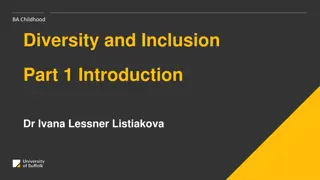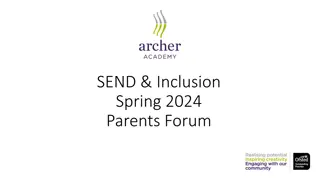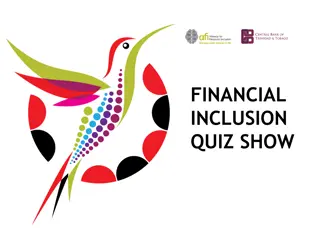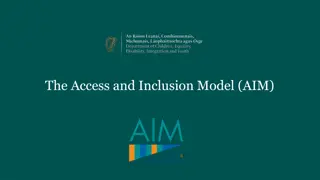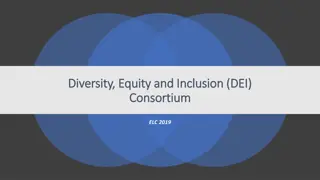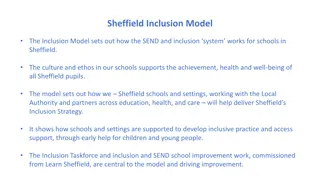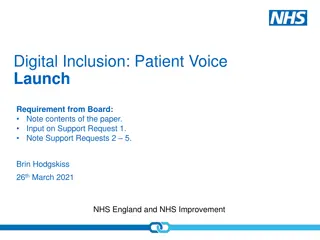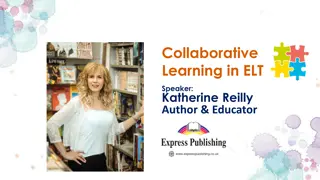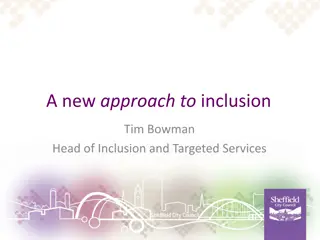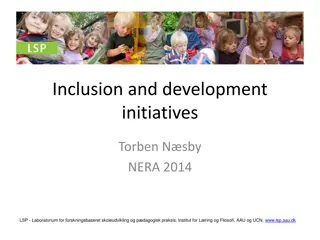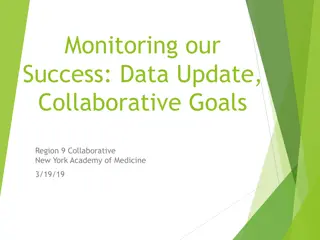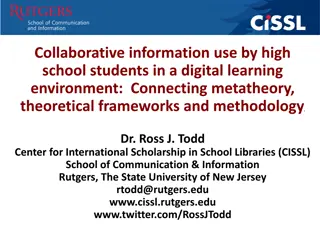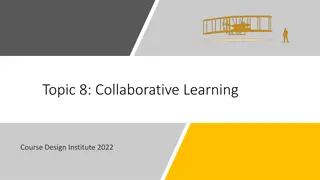Inclusion in Education: A Collaborative Approach
Inclusion in education promotes all students learning and working together, gaining awareness of each other's strengths, and being served in a regular classroom setting with grade-level curriculum. It emphasizes what inclusion is not, such as having one teacher provide instruction while another acts as an assistant. True inclusion involves co-teaching teams sharing the same philosophy, joint ownership of the classroom and students, ongoing communication, and collaborative growth, learning, and planning together. Additionally, inclusion with Title I ensures that all students are supported by both the classroom teacher and Title I teacher through guided reading groups and additional small group instruction for math.
Download Presentation

Please find below an Image/Link to download the presentation.
The content on the website is provided AS IS for your information and personal use only. It may not be sold, licensed, or shared on other websites without obtaining consent from the author.If you encounter any issues during the download, it is possible that the publisher has removed the file from their server.
You are allowed to download the files provided on this website for personal or commercial use, subject to the condition that they are used lawfully. All files are the property of their respective owners.
The content on the website is provided AS IS for your information and personal use only. It may not be sold, licensed, or shared on other websites without obtaining consent from the author.
E N D
Presentation Transcript
WHY INCLUSION? MELISSA COLLINS EXCEPTIONAL CHILDREN S TEACHER & MARIA MILLER 3RDGRADE CLASSROOM TEACHER HAYWOOD COUNTY SCHOOLS BETHEL ELEMENTARY
WHY INCLUSION? All students learning and working together All students learning and working together All students gain awareness and All students gain awareness and understanding of each others strengths understanding of each others strengths Serving all students Serving all students in in regular classroom setting setting Grade level curriculum Grade level curriculum regular classroom
WHAT INCLUSION IS NOT Having one teacher provide instruction while Having one teacher provide instruction while other teacher is acting as a teacher assistant other teacher is acting as a teacher assistant Instruction solely provided in grade level Instruction solely provided in grade level classroom classroom Same goals for all students Same goals for all students Expecting all students to learn the same way Expecting all students to learn the same way Providing one type of assessment for all students Providing one type of assessment for all students Focusing on one subgroup of students Focusing on one subgroup of students
INCLUSION IS Co teaching teams Co teaching teams Sharing the same philosophy Sharing the same philosophy Joint ownership of classroom and students Joint ownership of classroom and students Ongoing Communication Ongoing Communication Growing, Learning, & Planning together Growing, Learning, & Planning together
INCLUSION WITH TITLE I All students are served by the classroom teacher and Title I teacher All students are served by the classroom teacher and Title I teacher Classroom teacher and Title I teacher both teach guided reading groups during a Classroom teacher and Title I teacher both teach guided reading groups during a 2 hour block 2 hour block Title I teacher provides additional small group instruction for math Title I teacher provides additional small group instruction for math Groups rotate between teachers every 1 Groups rotate between teachers every 1- -2 weeks 2 weeks
GROUPING STUDENTS FOR TITLE I INSTRUCTION Teachers use data for grouping students (reading and math) Teachers use data for grouping students (reading and math) Grouping is based on standard based learning and gaps in knowledge Grouping is based on standard based learning and gaps in knowledge Flexible grouping throughout the year Flexible grouping throughout the year
INCLUSION WITH EC WHAT STUDENTS WHAT STUDENTS BENEFIT? BENEFIT? Students that are performing no more than 2 years Students that are performing no more than 2 years below grade level below grade level Minor behavior problems Minor behavior problems IEP goals can be met through grade level IEP goals can be met through grade level curriculum curriculum
WHY DOESNT EVERY SCHOOL USE INCLUSION Not enough teachers to serve all children at all grade levels Not enough teachers to serve all children at all grade levels Difficult to plan with teachers Difficult to plan with teachers Not every school has Title I funding Not every school has Title I funding Some schools don t believe in this philosophy Some schools don t believe in this philosophy
SO IM GOING TO BE INVOLVED IN AN INCLUSIVE MODEL. WHERE DO I START? Get to know your students (talk with previous teacher, dissect data) Get to know your students (talk with previous teacher, dissect data) Get to know the teacher(s) you will be working with Get to know the teacher(s) you will be working with Work with your co Work with your co- -teacher to schedule teacher to schedule Decide on grouping Decide on grouping BE FLEXIBLE BE FLEXIBLE




